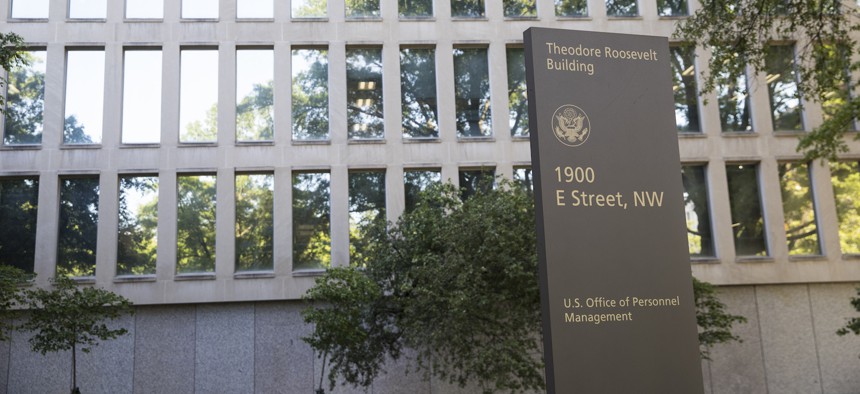OPM pushes ahead on AI workforce policy, but key deliverables are overdue

Sarah Silbiger for The Washington Post via Getty Images
The agency announced a job analysis survey on Monday for feds doing AI-related work, but the federal HR shop is lagging on AI in Government Act of 2020 implementation.
The Office of Personnel Management is inching ahead on past-due requirements for artificial intelligence-related work mandated by Congress in the AI in Government Act of 2020, but still lags behind on others.
The agency is issuing an AI job analysis survey, it announced on Monday, to inform its development of a competency model, meant to help with the hiring, career development and performance management of federal employees doing AI work.
OPM said in a memo sent to agencies Monday that the survey is meant to validate the AI competencies the personnel agency has already identified.
“Developing a competency model for AI work is a key step towards ensuring federal agencies can attract, recruit, and hire skilled employees to accomplish artificial intelligence work,” the agency states in the memo.
The new OPM memo and survey help check off requirements to identify key skills and competencies for AI feds, OPM says, as required by the AI in Government Act of 2020.
However, OPM remains behind on other requirements mandated by that legislation, the 18-month deadline for which passed in July 2022. The Government Accountability Office has already dinged OPM for delays in a December report.
One of those requirements is for OPM to either create an occupational series for AI in government or update an existing one.
OPM told Nextgov/FCW that it intends to release more classification policy guidance for AI soon, although it will cover more than one position, as opposed to OPM setting up a single AI occupational series or updating an existing one.
OPM said in a response included in the GAO report that creation a single occupational series for AI in government is “not conducive to individual agency needs and missions” and that OPM will instead issue an AI position classification interpretive guide to help agencies identify AI work, figure out how to classify positions that require such work and qualify job-seekers for those roles.
The new memo to agencies also references that forthcoming guide, which OPM says will meet the requirements of the AI in Government Act of 2020.
That law also required that OPM estimate the number of AI employees by agency and put together two- and five-year forecasts for the number of feds working on AI in each agency. OPM told Nextgov/FCW that those estimates and forecasts have been completed, although GAO wrote in its report that OPM hadn’t provided documentation to show that it had done the estimation or the forecasts.
GAO also noted that the personnel agency hadn’t fulfilled requirements from a 2020 executive order to create an inventory of rotational programs to be used to expand the pool of AI experts in government and issue a report with recommendations for how agencies could leverage them to do so. However, OPM says it has since done the inventory and report.
All this is happening as the federal government attempts to rapidly staff up on AI-experienced employees talent as part of a “talent surge” sparked by an executive order issued last fall. The success of agencies in terms of reskilling feds and hiring such feds will be fundamental to the success of the AI executive order overall, experts have told Nextgov/FCW.
Agencies are already up against chronic problems in government hiring, like the struggle to match private sector wages in a competitive market or ensure that the experience for job seekers is smooth, despite the complicated government bureaucracy that dictates hiring.
Daniel Ho, a professor at Stanford Law School, senior fellow at the Stanford Institute for Human-Centered AI and director of the university’s RegLab, praised OPM’s actions since the executive order so far, including its authorization of direct hire for AI positions.
“But the puzzling delays and lack of transparency in responding to the AI in Government Act, requirements for which were due over a year and a half ago, reflect big structural challenges in federal hiring,” he told Nextgov/FCW via email. “Without a forecast and occupational series, the White House's AI 'talent surge' could turn into 'talent blip.'"
Editor's note: This article has been updated to include OPM's completion of the inventory and report.
NEXT STORY: Lawmakers urge VA to tread carefully with AI






